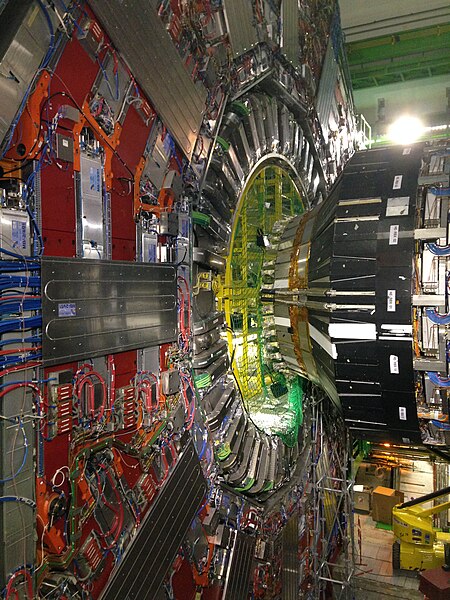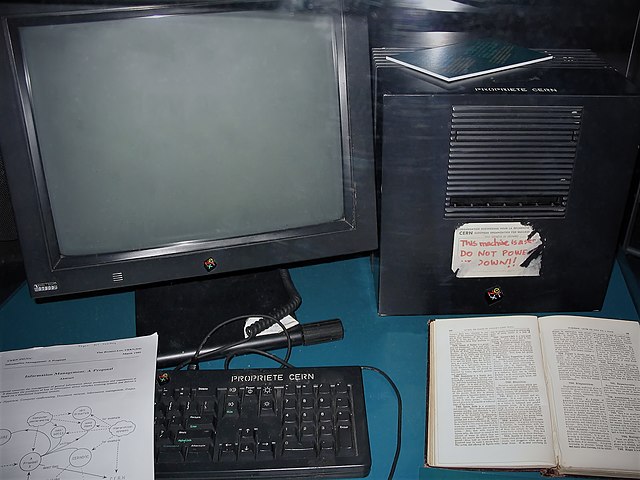The Large Hadron Collider (LHC) is the world's largest and highest-energy particle collider. It was built by the European Organization for Nuclear Research (CERN) between 1998 and 2008 in collaboration with over 10,000 scientists and hundreds of universities and laboratories across more than 100 countries. It lies in a tunnel 27 kilometres (17 mi) in circumference and as deep as 175 metres (574 ft) beneath the France–Switzerland border near Geneva.
Superconducting quadrupole electromagnets are used to direct the beams to four intersection points, where interactions between accelerated protons take place.
The LHC protons originate from the small red hydrogen tank.
CMS detector for LHC
Lyn Evans, the project leader of the Large Hadron Collider
The European Organization for Nuclear Research, known as CERN, is an intergovernmental organization that operates the largest particle physics laboratory in the world. Established in 1954, it is based in Meyrin, western suburb of Geneva, on the France–Switzerland border. It comprises 23 member states. Israel, admitted in 2013, is the only non-European full member. CERN is an official United Nations General Assembly observer.
CERN's main site in Meyrin, Switzerland, looking towards the French border
This NeXT Computer used by British scientist Sir Tim Berners-Lee at CERN became the first Web server.
This Cisco Systems router at CERN was one of the first IP routers deployed in Europe.
A plaque at CERN commemorating the invention of the World Wide Web by Tim Berners-Lee and Robert Cailliau








